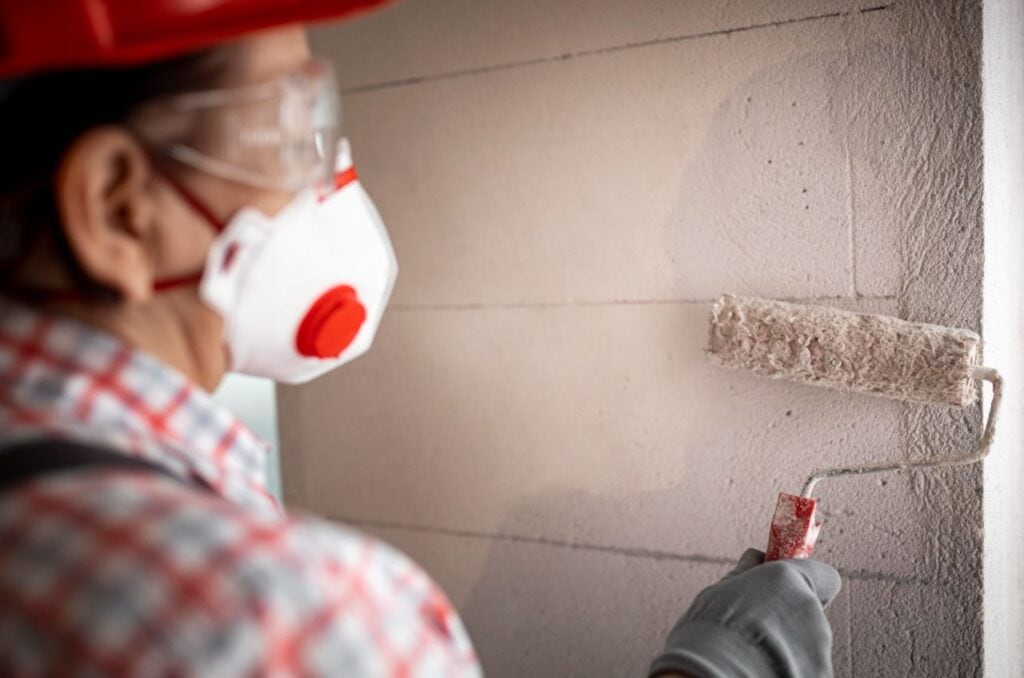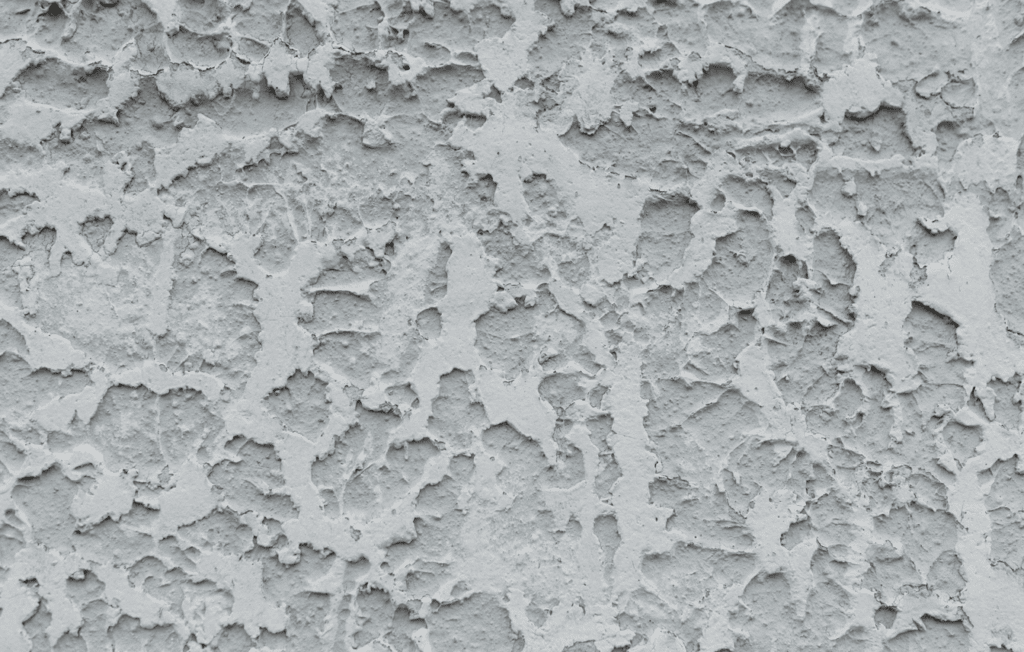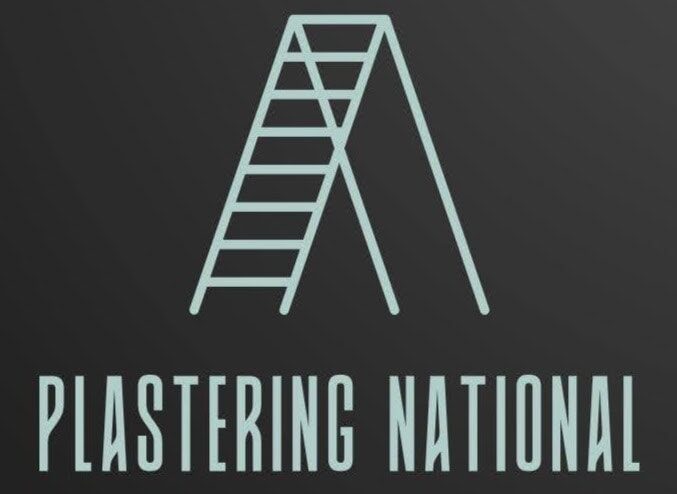A technique that has been around for quite some time, plastering is still in use today. The two primary components of plaster are gypsum and lime. This white material dries to a firm consistency and is widespread in the plastering process. Plastering the exterior of stone and brick structures not only makes them more weatherproof but also makes them appear more refined.
Plaster is highly effective in many contemporary contexts. In terms of home decor, there are a plethora of options. Since plaster has so many uses in home improvement, we have included a list of a few of them below.
What Is A Plaster Wall?
Plaster is a common material for finishing the inside of buildings, whether they are homes or businesses.
Plaster, a combination of sand, cement, and lime, is applied in layers over a wood or metal lath structure. You can get a smooth surface by painting or leaving the plaster walls unpainted.
Plaster walls are long-lasting, adaptable, and aesthetically pleasing. Plaster can withstand the test of time and is fire and water-resistant.
Furthermore, plaster walls may be made to look smooth or rough, giving them many personalisation options.
In addition to their practical use, plaster walls are also prized for their aesthetic worth. They can elevate any room with their classic elegance.
Installing, maintaining, and fixing plaster walls are challenges, too.
Plaster walls can be expensive to install and maintain professionally. Plaster walls can be pricey compared to cheaper options like drywall or wallpaper.
Homeowners prioritising longevity, adaptability, and aesthetics continue to choose plaster walls despite these drawbacks.
The Advantages of Plastering Walls
Finishing walls inside a home often involves plastering. It looks fantastic and lasts a long time. Plastering walls is commonly thought of as something that only older, more conventional homes have. Incorrect.
You might get a lot of benefits while plastering a wall. Here are only a handful of the most crucial ones to think about:
Plaster Is Durable
As an advantage, plaster outlasts drywall in terms of durability. Plaster makes a long-lasting surface that is suitable for painting. A thick layer has several benefits, including greater soundproofing and ease of maintenance.
When water is drained from the plaster mixture, a chemical process fortifies the walls. In the majority of instances, plaster can withstand knocks and dents. It is also affected by the lath, or backing utilised to support the plaster.
When applied properly, plastering can attain a degree of durability that suits your needs. A strong and durable wall might be yours with the plaster coating. The mixture may be stored for an extended period without any degradation due to the strong bond generated within it. It is less prone to being damaged by dents and impacts. As a result, this form is ideal for those seeking a robust and long-lasting product.
The Use of Plaster Is Both Decorative and Practical
Instead of plain drywall, use plaster moulds to decorate your walls. Many things should be considered while selecting plaster moulds, including style, colour, size, and theme. Your area can be transformed into a modern masterpiece by experimenting with various hues or depths.
You may add a personal touch to your home with plaster moulding, complementing any style you already have. Plaster moulding is quite versatile because it can be made to look both traditional and contemporary. Putting money into the interior design of your home will increase its value if you decide to sell it.
Aesthetic Appeal
According to another prevalent misconception among homeowners and the industry, plastering cannot be aesthetically valuable. I couldn’t agree more, especially with all the options nowadays. Plastering the wall is a simple way to make it look nice. Find the plaster that complements your home’s decor by trying out different ones. If you want it to look better, ensure it goes with everything else.
Artistry
Drywalling a wall frame requires nothing more than a level surface. In terms of noteworthy features, it allows you to paint or apply wallpaper.
Different building materials must be used to develop unique architectural features atop the drywall.
On the other hand, plaster is easy to work with and can be moulded into many different shapes.
Specialists in plastering are more like master artisans than construction workers; they meticulously plan beautiful elements and styles that can go with any taste.
Plaster, which may also be used for contemporary renovations, is among the many lovely features typical of Victorian mansions.
Plaster, when wet, is much easier to work with, making it perfect for usage in confined spaces or areas with unique shapes.
Efficiency and Speed of Installation
Draughting drywall to suit any unusually shaped area is necessary, and the material creates a fine dust that collects and can be difficult to clean up.
Wet plaster is put over the “blue board” and allowed to dry to fill the space.
There will be zero dust and mess. Again, as it is not necessary to sand after installation, less dust and debris is produced subsequently compared to drywall.
Plaster is easier and faster to apply than drywall since it doesn’t need sanding or cleaning up afterwards.
Plaster might be a pain to handle on your own compared to drywall unless the job at hand is straightforward. Nevertheless, with the help of a skilled plasterer, you may make the room uniquely yours by shaping it to suit your tastes.
FAQs About Plastering
Is Plastering Walls A Cost-Effective Option Compared To Other Wall Coverings?
While initial costs may vary, plastering walls can be a cost-effective long-term investment due to their durability and minimal maintenance requirements, resulting in lower lifecycle costs.
How Does Plastering Contribute To A Smoother, More Uniform Wall Surface?
Plastering walls allow smooth and uniform surfaces that conceal imperfections and irregularities in the underlying substrate, resulting in a visually appealing finish.
Can Plastering Walls Help Increase Property Value?
Yes, plastering walls can enhance interior spaces’ aesthetic appeal and perceived quality, potentially increasing property value and attractiveness to prospective buyers or tenants.
Do Plastering Walls Offer Environmental Benefits?
Yes, plastering walls with eco-friendly plaster materials reduces the environmental impact compared to synthetic wall coverings, as plaster is a natural and recyclable material requiring less energy.
How Does Plastering Contribute To Historic Preservation And Restoration Projects?
Plastering walls using traditional techniques and materials helps preserve historical authenticity and integrity, ensuring that historical buildings retain their architectural character and cultural significance for future generations to appreciate.
Plaster Is Versatile
If you’re on the fence about using plaster for your next DIY project, consider how it may be used. The plaster will function nicely with any material you’re dealing with, including stone, brick, half-timber, and frame. Moulding, incising, casting, stamping, dying, and stencilling are just a few of its many potential applications.
Use your imagination. Plastering ceilings is a simple way to add cornices and other decorative details. Cornices are decorative mouldings that accentuate certain ceiling details when placed at the ceiling’s transition points or between two ceiling panels. You can even mix and match cornices to create a certain look for your house.
Simplifying and Cleaning Up the Plastering Process
One advantage of plaster is that it creates less mess and takes less time to finish a wall than other installation methods. The installation process is made easy and efficient because dust is only formed when the powder is first watered.
The fact that plaster only requires sanding after application further reduces preparation time. Waiting for the bottom layer to cure entirely before applying additional coats is standard.
Plaster Is Stronger
The tensile strengths of solid plaster walls are far higher than those of drywall. Sand or punch a hole in cured plaster if you think drywall is tough. Nothing will happen. Use this power to your advantage if you value the preservation of your drywall from the ravages of time.
Plaster Is Energy Efficient
A thicker wall has what advantages? Among many other factors, energy efficiency ranks high. Walls made of plaster are usually 7/8 inches thick, nearly twice the thickness of walls made of drywall. Walls of thicker plaster provide better thermal breaks than drywall, leading to lower energy bills.
Better Sound Blocking
Plaster outperforms drywall in sound attenuation because of its physical characteristics and chemical composition. In comparison to drywall, plaster is both thicker and harder. In theory, the ability of a wall to block out sound should be directly proportional to its thickness. An ideal setting for solitude, a nightmare for nosy neighbours.
Because plaster is naturally dense, sound waves have difficulty travelling through it. Because of its relative thinness and lack of density, drywall is an improved soundproofing medium compared to plaster.
What constitutes a plaster wall’s sound transfer resistance, defined as its capacity to either entirely obstruct or considerably diminish the transmission of sound, is influenced by the materials and methods used to build the wall. Walls made of plaster are great for soundproofing since the material’s density and thickness make them effective at absorbing and reducing noise.
Considerations such as the wall’s fundamental structure, air gaps or fissures during the plastering process, and comparable matters determine the amount of soundproofing that may be necessary. Incorporating soundproofing and insulation onto plaster walls can further enhance their ability to resist sound transmission.
Cost
The general public tends to believe that plasters can be expensive. The additional labour and materials will cause the initial cost to be considerable, but the cost will be quite low in the long run. In the long run, you won’t have to spend much on repairs or other building methods because it doesn’t need any. Plastering is the way to go to get the most bang for your buck.
Easy Availability
There is a wide variety of options available on the market. Feel free to select whichever best suits your needs, but whichever is most convenient for you is OK. The choice’s widespread availability in stores is a plus. You won’t have to spend time searching stores for what you need because plastering is available and inexpensive.
Mildew and Mould Resistance
Since plaster does not include any living organisms, it cannot foster mould development.
Even if mould and mildew eat away at the paint and filth from a plaster wall, the wall will still be perfectly fine. The wall will be left smooth when the troublesome growth is eliminated.
Plaster walls will not become a breeding ground for mould and mildew if built and maintained correctly. Because of its inherent moisture resistance, plaster is a great building material since it inhibits mildew and mould growth.
But mould and mildew could grow on the wall if it is subjected to too much moisture or humidity. To avoid this, check the wall for enough airflow and fix any moisture problems immediately.
If you want to keep mould and mildew at bay from your plaster walls, you can use mould and mildew inhibitors or a specifically made plaster.
No Task Is Too Small
Plaster is an excellent material for new construction or remodelling projects that strive for a specific aesthetic because of these benefits.
The misconception that some jobs are not worth outsourcing has been around before. No job is too big or too little for the competence to apply plaster effectively.
Even the tiniest plaster can be skillfully used to beautify a property. The best way to ensure that stress cracks won’t appear, even if you only want a simple, smooth wall, is to lay the plaster professionally.
Conclusion
Plastering walls is a traditional technique used to finish the inside of buildings, making them more weatherproof and refined. Made from gypsum and lime, plaster is applied in layers over wood or metal lath structures, providing a smooth surface for painting or leaving unpainted. Plaster walls are long-lasting, adaptable, and aesthetically pleasing, with the ability to be made smooth or rough, offering various personalization options.
Despite being expensive to install and maintain professionally, homeowners prioritize longevity, adaptability, and aesthetics when choosing plaster walls. Plaster outlasts drywall in terms of durability, making it suitable for painting and easy maintenance. Plaster moulds can be used to decorate walls, adding a modern touch to any home. Plaster can also be used for contemporary renovations and Victorian mansions.
Plaster is easy to work with and can be moulded into various shapes, making it perfect for use in confined spaces or areas with unique shapes. It is easier and faster to apply than drywall, as it doesn’t need sanding or cleaning up afterwards. With the help of a skilled plasterer, homeowners can make their rooms uniquely theirs by shaping them to suit their tastes. Overall, plastering walls offers numerous benefits, including durability, aesthetic appeal, ease of installation, efficiency, and speed of application.
Plaster is a versatile and cost-effective material for DIY projects, suitable for various materials like stone, brick, half-timber, and frame. It can be used for molding, incising, casting, stamping, dying, and stencilling. Plastering ceilings is a simple way to add decorative cornices and other decorative details. The installation process is simplified and cleaner, as dust is only formed when the powder is first watered. Plaster walls are stronger than drywall, providing better thermal breaks and lower energy bills.
Plaster outperforms drywall in sound attenuation due to its density and thickness. Soundproofing and insulation can be added to plaster walls to further enhance their sound transmission. Plastering is often considered expensive due to additional labor and materials, but the long-term cost is low.
There is a wide variety of plaster options available, making it easy to find the right one for your needs. Plaster is also resistant to mold and mildew due to its inherent moisture resistance. However, excessive moisture or humidity can cause mold and mildew growth. To prevent these issues, check the wall for airflow and fix any moisture problems immediately.
Plaster is an excellent material for new construction or remodeling projects, as it can be skillfully applied to any size or task. Professionally laying plaster is the best way to ensure stress cracks don’t appear, even if you only want a simple, smooth wall.
Content Summary
- Plastering, an age-old technique, remains relevant today in Australian homes.
- The primary components of plaster include gypsum and lime, creating a durable white material.
- Plastering exteriors of stone and brick structures enhances weather resistance and aesthetics.
- Plaster offers diverse options for home decor and improvement projects.
- Plaster walls, composed of sand, cement, and lime, provide durability and aesthetic appeal.
- Plaster walls can be smooth or rough, offering personalization options.
- Despite challenges in installation and maintenance, homeowners value plaster for its longevity.
- Plaster walls are fire and water-resistant, enduring the test of time.
- Plaster walls can enhance any room with classic elegance.
- Plastering walls is both a decorative and practical choice for interior finishing.
- Plaster moulding adds versatility and complements various home styles.
- Skilled plasterers craft intricate designs, adding artistic value to walls.
- Plaster is efficient and faster to apply compared to drywall, reducing installation time.
- Plaster’s versatility allows it to be used with various materials for different projects.
- Plaster walls create less mess during installation compared to other methods.
- Plaster walls provide better soundproofing compared to drywall.
- Thicker plaster walls offer improved thermal insulation, leading to energy efficiency.
- Plaster’s density reduces sound transmission, providing a quieter environment.
- Plaster walls are resistant to mould and mildew, ensuring a healthier living space.
- Plaster is cost-effective in the long run due to minimal maintenance requirements.
- Plaster is readily available in stores, offering convenience to homeowners.
- Plaster walls resist mould and mildew growth, ensuring longevity.
- Plaster is suitable for both large construction projects and minor renovations.
- Skilled plasterers can beautify properties with even the smallest plastering tasks.
- Plaster walls are durable, providing long-lasting surfaces for painting.
- Properly applied plaster offers enhanced durability against impacts and dents.
- Plaster walls can be moulded into various shapes, adding unique architectural features.
- Plaster walls are adaptable and aesthetically pleasing, suiting any decor style.
- Plaster walls can be finished smooth or rough, offering customization options.
- Plaster walls are fire-resistant, ensuring safety in homes and businesses.
- Plaster walls provide better sound attenuation compared to drywall.
- Thicker plaster walls offer improved insulation, reducing energy costs.
- Plaster walls are resistant to mould and mildew, promoting healthier indoor air quality.
- Plaster walls offer cost-effective solutions in the long run due to minimal maintenance.
- Plaster walls are readily available in stores, providing convenience to homeowners.
- Plaster walls are versatile, suitable for various construction and renovation projects.
- Plaster walls create less mess during installation, simplifying cleanup.
- Plaster walls offer enhanced durability, resisting impacts and dents.
- Skilled plasterers can create intricate designs, adding artistic value to walls.
- Plaster walls provide better soundproofing compared to drywall, ensuring a quieter environment.
- Thicker plaster walls offer improved thermal insulation, reducing energy consumption.
- Plaster walls are resistant to mould and mildew, promoting healthier indoor environments.
- Plaster walls require minimal maintenance, offering cost-effective solutions in the long term.
- Plaster walls are readily available in stores, providing convenience to homeowners.
- Plaster walls are versatile, suitable for various architectural styles and design preferences.
- Plaster walls create less mess during installation, simplifying cleanup efforts.
- Plaster walls offer enhanced durability, ensuring long-lasting surfaces for painting.
- Skilled plasterers can create custom designs, adding unique character to walls.
- Plaster walls provide better sound attenuation compared to drywall, enhancing acoustic comfort.
- Thicker plaster walls offer improved thermal insulation, contributing to energy efficiency in homes.



